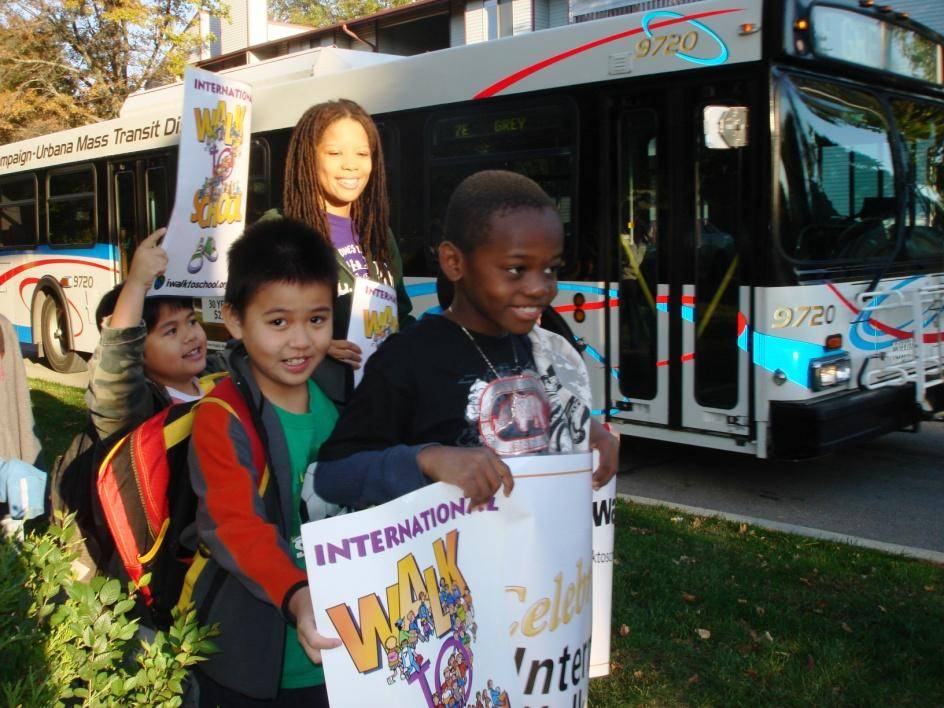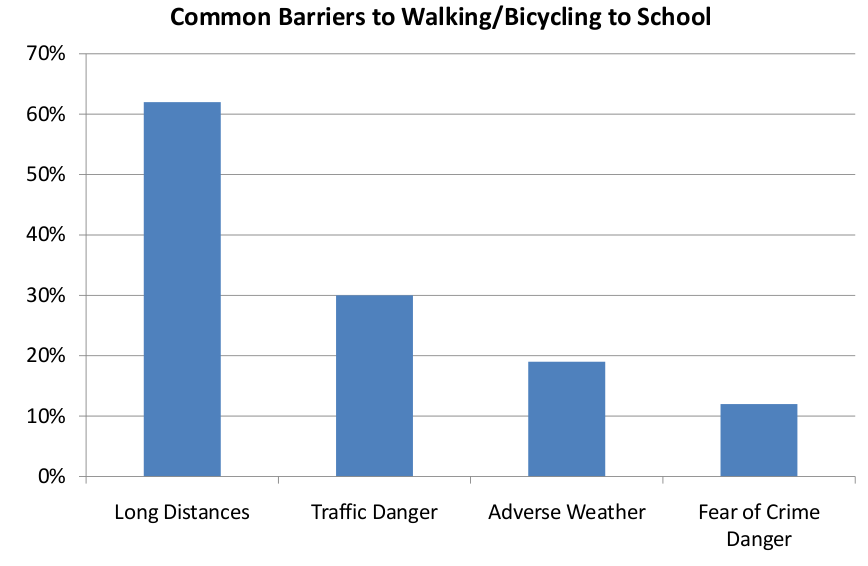
The first Wednesday in October of this year thousands of kids, parents, volunteers, and U of I Student Athletes hit the sidewalks of Champaign-Urbana early in the morning. What was that all about? October 6th was International Walk and Roll to School Day, a perfect example of “Thinking Globally and Acting Locally.” Events took place in more than 40 countries and 3,200 schools across the U.S. In Champaign-Urbana, 15 elementary schools participated this year.
Why is walking and biking to school important? You may have heard about the epidemic of childhood obesity in our country, and Champaign County is no exception. The long term consequences of our children being overweight and obese has life long implications, including the unprecedented fact this generation may be the first in American history to have shorter life spans than their parents.
Consider these facts:
- Obesity rates among children have tripled since 1980.
- Illinois has the 8th highest rate of childhood obesity in the country at 27%.
- Roughly 10% of children nationwide walk to school regularly. Even among those kids living within a mile of their school, only 25% are regular walkers.
- In 1969, 87% of children who lived within 1 mile of their school walked or bicycled there.
- Many experts feel that lack of activity is one of the primary reasons for the increase in childhood obesity and the increase in cases of type 2 diabetes in children.
- Elementary school-aged children should accumulate at least 30 to 60 minutes of age-appropriate and developmentally appropriate physical activity from a variety of activities on all, or most, days of the week.
- Walking one mile to and from school each day is two-thirds of the recommended sixty minutes of physical activity a day. Plus, children who walk to school have higher levels of physical activity throughout the day.
What are the most common barriers to walking and biking to school? A study from the CDC confirms many of the reasons given by parents in C-U:

The air quality around school is negatively impacted by vehicular exhaust from long lines of idling cars and school buses. Traffic congestion is created around schools due to most children being driven by parents, thereby decreasing safety for children who are walking or bicycling to school. As much as 20% to 30% of morning traffic is generated by parents driving their children to schools. Schools that are designed so children can walk and bicycle have measurably better air quality.
Neighborhood schools with good sidewalks, crosswalks, and safety programs can address many of these problems.
Neighborhood schools:
- reduce traffic
- increase walking/biking by 13%
- 15% reduction in air pollution emissions
- Increasing a neighborhood’s walkability by 5% reduces vehicle miles traveled by 6%
Concerns about the issues of childhood obesity, safety, and long term traffic consequences prompted Congress to act in 2005. Congress approved $612 million in funding for five years of state implementation of Safe Routes To School (SRTS) programs in all 50 states and the District of Columbia.
Champaign-Urbana was working to improve safety for children walking and bicycling to school before these funds became available and has since received several grants, a total of $172,500, to achieve our goals to build sidewalks, improve school zones, increase safety, provide education and raise awareness. C-U has a community plan for SRTS as well as a report on current conditions and SRTS walking maps that you can find here: http://www.ccrpc.org/transportation/safewalkingreport.php
SRTS programs have been found to work best when communities implement the 5 E’s. What are the 5 E’s?
- Education
- Engineering
- Encouragement
- Enforcement
- Evaluation
In Champaign-Urbana a coalition of community organizations, schools, volunteers, and advocates called C-U Safe Routes to School Project (C-U SRTS Project) have been working to improve conditions for our children. You may have seen the C-U SRTS Project billboards around town or on MTD buses, heard commercials on the radio or seen ads at the movie theater. You can visit the C-U SRTS Project website to get more information: www.cu-srtsproject.com
As C-U works and plans for our future we need to focus on our children and our schools more broadly. We need to consider how we can improve access for walking and biking to school. We need to obey the speed limits in school zones and watch for children. We need to consider the academic, social, economic, and health impacts of a built environment that makes walking and biking dangerous and difficult.
Building a more livable and healthy community depends on us and the decisions we make. Our children are counting on us.
Additional resources and references:
http://www.saferoutespartnership.org/mediacenter/quickfacts
http://www.saferoutesinfo.org/
http://www.cdc.gov/nccdphp/dnpa/kidswalk/
Cynthia Hoyle is the co-chair of the C-U Safe Routes to School Project.








